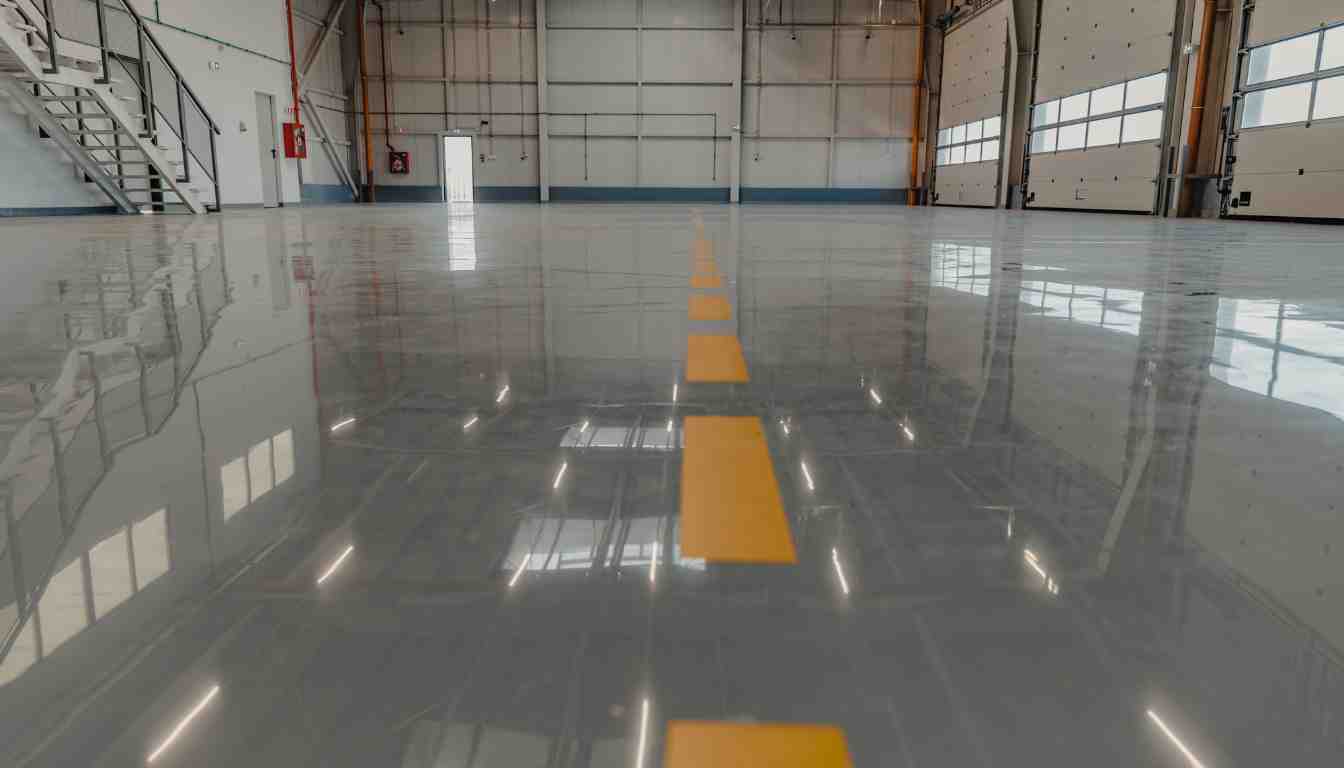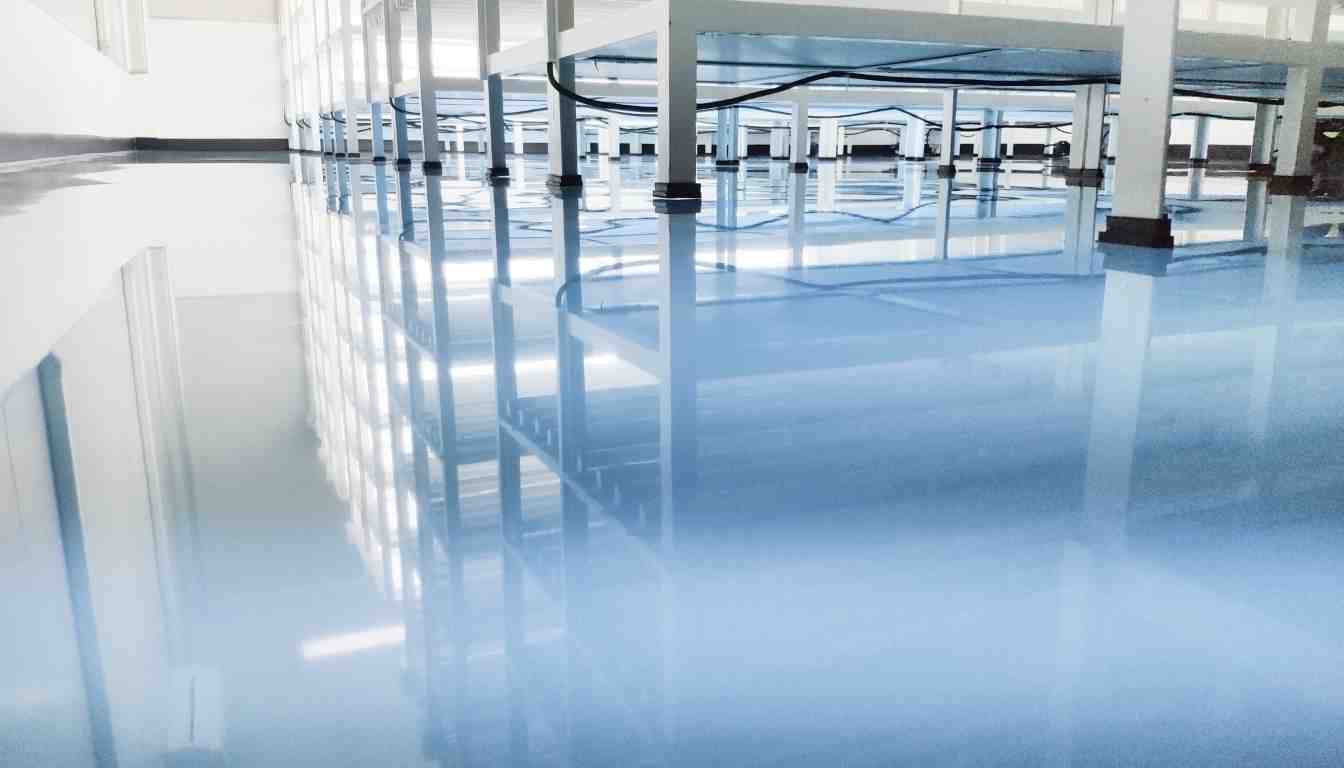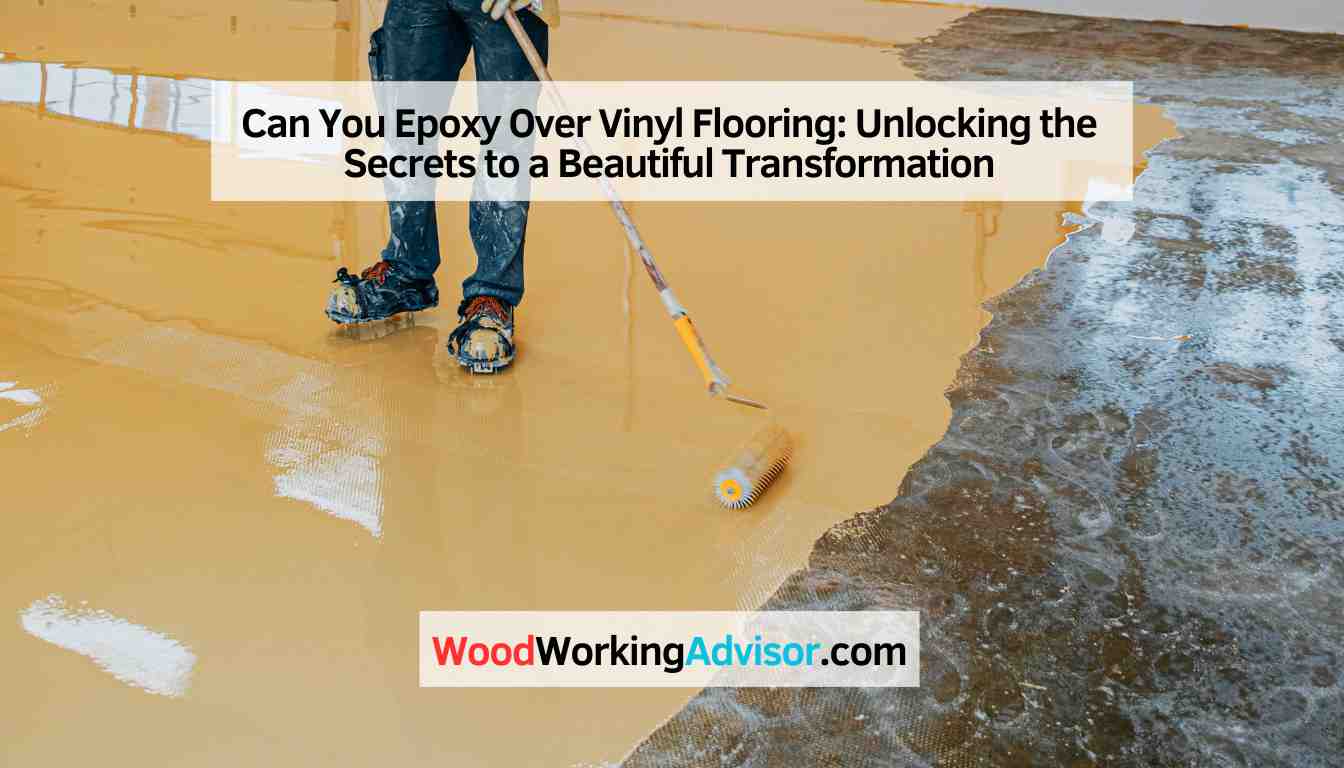Yes, you can epoxy over vinyl flooring, as long as the vinyl is well-adhered, level, and in good condition. Epoxy can provide a durable and aesthetically pleasing finish to your vinyl floor.
However, it is important to follow proper preparation and application techniques to ensure a successful and long-lasting bond. The first step is to thoroughly clean and degrease the vinyl surface, then sand it to create a rough texture for better adhesion.
Next, apply a primer to enhance the bond between the epoxy and the vinyl. Finally, apply the epoxy coating in multiple thin layers, allowing sufficient curing time between each layer. By following these steps, you can transform your vinyl floor with a beautiful epoxy finish that adds both style and protection.
Pros And Cons Of Vinyl Flooring
Vinyl flooring has gained immense popularity in recent years due to its durability, versatility, and affordable price. However, like any other flooring option, it has its own set of advantages and disadvantages. In this section, we will explore the pros and cons of vinyl flooring, giving you a comprehensive understanding before you decide to epoxy over it.
Advantages Of Vinyl Flooring
Vinyl flooring offers several benefits that make it an attractive choice for homeowners. Let’s take a closer look at some of these advantages:
- Durability: Vinyl flooring is known for its exceptional durability, making it suitable for high-traffic areas like entrances, kitchens, and hallways. It is resistant to wear and tear, scratches, and stains, making it a great long-term investment.
- Water Resistance: One of the biggest advantages of vinyl flooring is its ability to withstand moisture. This makes it an ideal option for bathrooms, laundry rooms, and kitchens where water spills are common. Vinyl flooring is also resistant to mold and mildew, making it an excellent choice for humid environments.
- Easy Maintenance: Keeping your vinyl flooring clean and well-maintained is a breeze. Regular sweeping and occasional mopping are usually sufficient to keep it looking great. Unlike other flooring options, vinyl does not require waxing or polishing, saving you time and effort in maintenance.
- Wide Range of Designs: Vinyl flooring comes in a vast array of designs, colors, and patterns, allowing you to choose the one that best suits your aesthetic preferences. Whether you prefer the look of natural wood, stone, or ceramic tiles, you can find vinyl flooring that mimics the appearance of these materials.
- Comfortable Underfoot: Vinyl flooring has a cushioned surface, providing a comfortable and soft feel underfoot. This is particularly beneficial in areas where you spend a lot of time standing, such as the kitchen or laundry room.

Disadvantages Of Vinyl Flooring
While vinyl flooring offers many advantages, it is essential to consider the following disadvantages before making a final decision:
- Not as Eco-Friendly: Vinyl is made from synthetic materials, which are not as eco-friendly as natural materials such as hardwood or bamboo. If environmental sustainability is a top priority for you, vinyl flooring may not be the best option.
- Potential for Fading: Over time, vinyl flooring may experience some fading due to prolonged exposure to sunlight. To prevent this, it is advisable to use curtains or blinds to protect the flooring from direct sunlight.
- Not as Luxurious: While vinyl flooring can mimic the appearance of high-end materials, it may not offer the same luxurious feel as authentic hardwood or natural stone. If you are seeking a premium look and feel, vinyl flooring may not meet your expectations.
- Difficult to Repair: Although vinyl flooring is durable, it is not immune to damage. If a section of your vinyl flooring gets damaged, it can be challenging to repair or replace without affecting the overall appearance. In such cases, it may be necessary to replace the entire floor.
- Shorter Lifespan: Compared to materials like hardwood or tile, vinyl flooring has a relatively shorter lifespan. While it can last for many years with proper care, it may not match the long-term durability of other flooring options.
Now that you are aware of the pros and cons of vinyl flooring, you can make an informed decision on whether to proceed with epoxying over it. Consider your priorities, budget, and specific requirements to determine if vinyl flooring fits your needs.
Understanding Epoxy Flooring
Epoxy flooring offers a durable and attractive solution for vinyl flooring. With proper preparation and application, you can successfully epoxy over vinyl for a seamless and long-lasting finish. Discover the benefits and considerations of this process to achieve the desired results.
What Is Epoxy Flooring?
Epoxy flooring is a popular choice for both residential and commercial spaces due to its durability, versatility, and aesthetic appeal. This type of flooring is made by combining epoxy resin and a hardening agent, which chemically react to create a strong and resilient surface.
Epoxy flooring is commonly used in areas that experience high foot traffic or heavy machinery, such as garages, warehouses, hospitals, and retail stores. Its seamless and non-porous surface makes it easy to clean and resistant to stains, chemicals, and moisture, making it an ideal option for spaces that require a sanitary and low-maintenance environment.
Types Of Epoxy Flooring
There are several types of epoxy flooring available, each with unique properties and applications. Here are some common types:
- Self-leveling epoxy: This type of epoxy is commonly used in commercial and industrial settings where a smooth and seamless surface is desired. It is self-leveling, which means it flows and spreads evenly, creating a level and flat floor surface. Self-leveling epoxy is often used to repair and refinish concrete floors.
- Flake epoxy: Flake epoxy flooring is a decorative option that adds texture and visual interest to the floor. It involves adding colored flakes or chips to the epoxy coating, creating a speckled or terrazzo-like effect. Flake epoxy is commonly used in garages, showrooms, and retail spaces.
- Metallic epoxy: Metallic epoxy flooring creates a stunning, marbled effect on the floor surface. It uses metallic pigments mixed with epoxy resin to create a dynamic and unique design. Metallic epoxy is often used in residential spaces, restaurants, hotels, and art galleries.
- Quartz epoxy: Quartz epoxy flooring combines colored quartz grains with epoxy resin to create a durable and slip-resistant surface. It is commonly used in areas that require high traction, such as commercial kitchens, hospitals, and sports facilities.
- Urethane epoxy: Urethane epoxy flooring is a high-performance option that offers exceptional durability and chemical resistance. It is often used in industrial and manufacturing facilities that require a floor that can withstand heavy machinery, chemicals, and abrasion.
These are just a few examples of the many types of epoxy flooring available. Each type has its own unique benefits and considerations, so it’s important to choose the right one based on the specific needs and demands of the space.
Can You Epoxy Over Vinyl Flooring?
When it comes to transforming the look of your vinyl flooring, epoxy coating is a popular choice. Not only does it provide a durable and glossy finish, but it also adds a touch of elegance to any space. However, before you dive into this exciting project, it’s essential to understand the considerations and limitations involved to ensure a successful outcome.
Preparation
Before you epoxy over vinyl flooring, proper preparation is key. Here are a few steps you should follow:
- Ensure the vinyl flooring is clean and free from any grease, dirt, or debris. Thoroughly sweep and mop the floor to remove any impurities.
- Inspect the surface for any damages or loose vinyl tiles. If you find any, repair or replace them before applying the epoxy coating.
- Sand the surface gently to create a rough texture, allowing the epoxy to adhere better. Be careful not to damage the vinyl in the process.
- Using a high-quality primer specifically designed for use with vinyl flooring, apply a thin coat to enhance the bond between the vinyl and the epoxy.
- Let the primer dry completely according to the manufacturer’s instructions before proceeding to the epoxy application.
To further ensure a smooth and successful epoxy coating, it’s recommended to consult the manufacturer’s instructions and guidelines.
Considerations And Limitations
While epoxy coating can be applied over vinyl flooring, it’s crucial to be aware of the considerations and limitations involved:
- Epoxy coating may add height to the vinyl floor surface. This can result in difficulties with transitions between rooms and doorways. Make sure to account for this height difference when planning your project.
- Not all types of vinyl flooring are suitable for epoxy coating. Luxury vinyl tile (LVT) and vinyl composite tile (VCT) are typically more compatible with epoxy due to their stronger adhesion properties. However, it’s essential to check with the manufacturer of your specific vinyl flooring to confirm its compatibility.
- Extreme temperatures can affect the performance of epoxy coating over vinyl flooring. It’s crucial to maintain a consistent temperature and follow the manufacturer’s recommendations to ensure the longevity of the epoxy finish.
- Some vinyl flooring may have texture or embossed patterns that can affect the smoothness and appearance of the epoxy coating. Consider the texture of your vinyl flooring and how it may impact the desired outcome before proceeding.
- Proper ventilation is vital during the epoxy application process due to the strong odor and fumes emitted. Ensure you have adequate ventilation in the area and take necessary precautions to protect yourself and others.
By understanding the preparation steps and being aware of the considerations and limitations, you can confidently epoxy over your vinyl flooring, transforming it into a stunning, durable, and attractive surface. Always follow the manufacturer’s instructions and guidelines for the best results. With careful planning and execution, your vinyl flooring will undergo a remarkable makeover that will leave you thrilled with the results.

Steps To Epoxy Over Vinyl Flooring
If you’re tired of the outdated or lackluster appearance of your vinyl flooring, epoxy coating can be a fantastic solution to transform the space. Not only does epoxy provide a fresh, modern look, but it also adds durability and protection to your vinyl floor. However, before you jump into the epoxy application, it’s essential to follow a few crucial steps to ensure a successful outcome. In this article, we’ll guide you through the process with three key steps: Cleaning and Surface Preparation, Priming and Patching, and Applying Epoxy Coating. Let’s dive right in.
Cleaning And Surface Preparation
Before applying epoxy coating to your vinyl flooring, thorough cleaning and surface preparation are vital to ensure proper adhesion and a long-lasting finish. This step involves the following:
- Remove all furniture, rugs, and obstacles from the area. Clearing the space allows for easy access to the entire floor surface.
- Vacuum or sweep the floor to remove any loose dirt, dust, or debris. This step ensures a clean surface for optimal adhesion.
- Use a mild detergent or specially formulated cleaner to scrub the vinyl flooring. Remove any stains, grease, or grime thoroughly using a scrub brush or mop.
- Rinse the floor with clean water to remove any residual cleaning agents or dirt.
- Allow the vinyl floor to dry completely before proceeding. Ensure there is no moisture present, as it can interfere with the epoxy adhesion.
Priming And Patching
Priming and patching the vinyl flooring surface is essential to enhance adhesion and create a smooth, even base for the epoxy coating. Follow these steps:
- Choose a high-quality epoxy primer suitable for vinyl flooring. Apply the primer evenly over the entire surface, following the manufacturer’s instructions.
- Allow the primer to dry completely. Drying times may vary depending on the product, so refer to the product label for accurate information.
- Inspect the vinyl flooring for any cracks, chips, or imperfections. Use a patching compound to fill in these areas and create a seamless surface.
- Smooth out the patched areas using a putty knife or a trowel. Ensure the surface is level and even to avoid any visible inconsistencies once the epoxy coating is applied.
- Allow the patching compound to dry fully as per the manufacturer’s instructions.
Applying Epoxy Coating
Now that you’ve cleaned, prepared, and primed your vinyl flooring, it’s time to apply the epoxy coating for a stunning finish. Follow these steps:
- Mix the epoxy coating components thoroughly, following the manufacturer’s instructions. It’s crucial to achieve a well-blended mixture for consistent adhesion and color.
- Start by applying a thin, even coat of epoxy using a roller or brush. Work in small sections, gradually covering the entire floor surface.
- Once the initial coat is applied, allow it to dry according to the manufacturer’s instructions. This drying period may vary, so ensure you follow the recommended timeframe.
- If desired, apply additional coats of epoxy for increased durability and a more vibrant finish. Allow each coat to dry fully before applying the next one.
- After the final coat is applied and dried, inspect the floor for any missed spots or imperfections. Touch up these areas as needed to achieve a flawless result.
By following these three key steps – Cleaning and Surface Preparation, Priming and Patching, and Applying Epoxy Coating – you can successfully epoxy over your vinyl flooring, reviving its appearance and adding durability to withstand daily wear and tear. Transform your space with this cost-effective solution and enjoy a beautiful and long-lasting floor.
Conclusion
To summarize, epoxy can be successfully applied over vinyl flooring, provided that certain conditions are met. Proper surface preparation, including thorough cleaning and sanding, is crucial to ensure a strong bond. Additionally, choosing the right epoxy product for the job and following the manufacturer’s instructions is essential.
By following these steps, you can transform your vinyl flooring into a durable, attractive surface that will stand the test of time. Always consult a professional for personalized advice and guidance.


